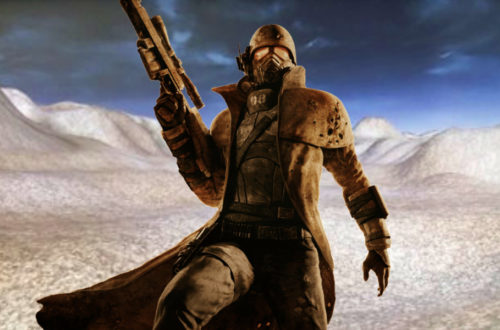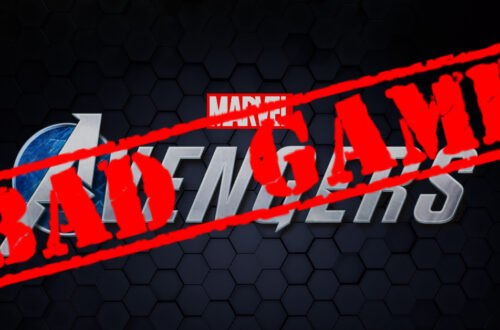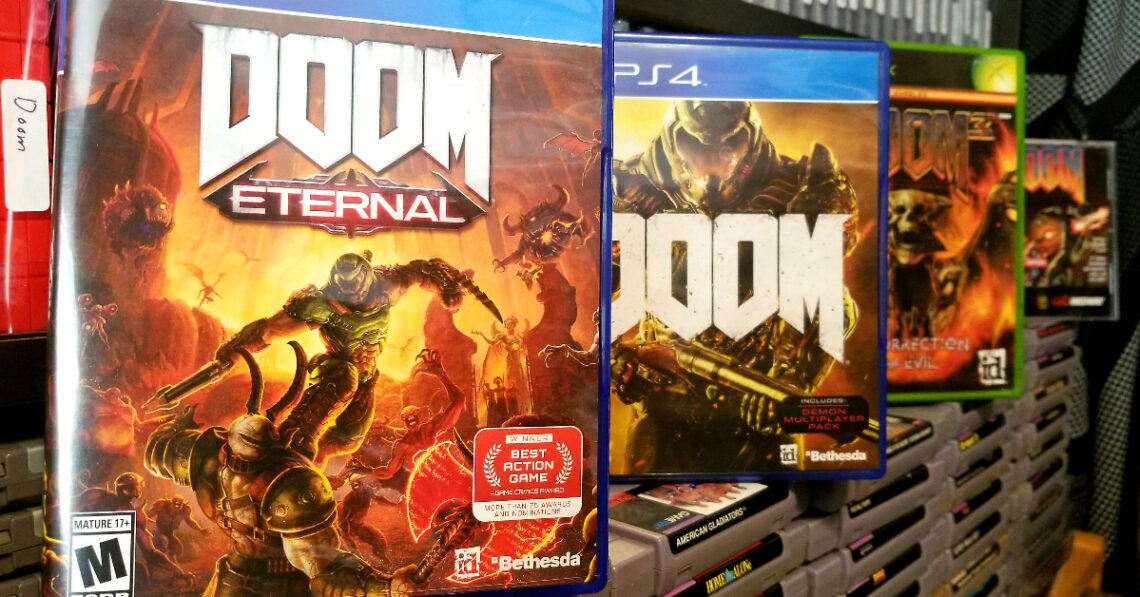
Doom Eternal: The Definition of Good Game Design
I love Doom Eternal. It scratches almost every itch that I have as a gamer. From the near-perfect difficulty curve, to the carrots on sticks, the shooter never ceases to raise the bar on almost every level. In my humble and biased opinion, it is very nearly a perfect archetype for what makes a video game great.
And the irony of it all? This is coming from someone that never had a strong affinity for first-person shooters.
I’ve certainly played my fair share of them through the years, but many of them passed me by for two main reasons. The first was that I grew up in a household that did not look favorably upon FPS’s for young eyeballs. As a result, I kept to mostly innocuous genres such as platformers and point-and-click adventures.
The second reason was due to our lack of fast internet speeds for most of my childhood. While many friends were able to link up online for Halo and Call of Duty, I would quietly be working on my 3rd playthrough of Link to the Past on Super Nintendo.
As a result, I’ve naturally gravitated towards genres that were deemed non-violent and also did not require a broadband connection. When I was old enough to make my own money (and thus, my own decisions) at the age of 15, I invested in many first-person shooters to make up for the lost time.
And even then, few of them made a long-lasting impression. I certainly had a fun time with classics like Medal of Honor: Frontline and later on, Wolfenstein: The New Colossus. But none of my top 10 games of the past decade included FPS’s. It’s just not a genre I had particularly strong feelings for one way or another.
Enter Doom.
I played the 2016 reboot about a year or two after release. I didn’t flag it as something I wanted to experience right away, but the critical acclaim intrigued me. So I picked up a copy, gave it a whirl, and was immediately gripped. Like the genre as a whole, I didn’t have an undying love for the Doom franchise either. But I had such a fun time with the Bethesda release, I won’t lie and say I wasn’t looking forward to the sequel Doom: Eternal.
As I’ve strongly indicated above, I was not disappointed.
Doom: Eternal goes above and beyond what made the 2016 predecessor good, and transformed it into something great. Had it released a year or so earlier, it very well might’ve edged its way into my top 10 of the decade. It does so much right, that I can’t stop thinking about it even after completing the main campaign.
So how did this first-person shooter blast its way into the top of my playlist?
(Note: Minor spoilers to follow!)
The Mechanics
The basic gameplay loop of Doom is fairly straightforward. You enter a killbox, shoot a bunch of demons, then platform for a while and make your way to the next killbox.
Rinse, wash, repeat.
But the way in which this plays out is simply glorious.
Need ammo? Shred the next demon you see with your chainsaw to dispense some. Running low on armor? Torch an imp with the shoulder-mounted Flame Belch. Health nearing zero? Complete a Glory Kill to get some more. All three of these consumables are vital, and deplete rapidly in the heat of battle. Therefore, keeping all of these commodities in check forces the player to switch up tactics to stay alive.
It’s an orchestrated balancing act, and a bloody fun one at that.
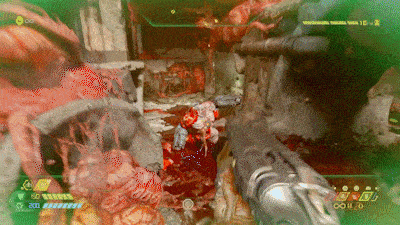
The Glory Kill, while not new to Eternal, is easily one of my favorite mechanics brought back from the 2016 predecessor. The idea is that after any enemy sustains a certain amount of damage (and is on the verge of death), they stagger for a few seconds. It’s during these moments that the player has a brief window of opportunity to perform a Glory Kill on the staggered demon to finish it off. Like Mortal Kombat’s “Brutalities,” the player is rewarded with a brief cutscene as Doomguy decimates the demon — often in satisfyingly gory fashion.
And on top of looking cool, the Glory Kill is also a necessary portion of combat. It is one of the few ways to replenish health, encouraging the player to farm imps and other lower-level demons. Thus, splitting enemies in half is not only aesthetically pleasing (in a macabre context), but also pragmatic.
What’s not to like?
Doom Eternal also implements new ways of mobility. 2016’s Doom was fast-paced, but now feels slow in comparison to its sequel. Eternal adds a dash move, which completely overhauls lateral traversal. To be able to dodge in this way from enemy fire just feels awesome, further enhancing the already intense action I knew from the predecessor.
I do admit a few of the navigation and defense mechanics feel a bit tacked on at times (EG the ice bomb and wall climbing), but all in all Doom Eternal’s mechanics are largely a home run and simply a blast to explore.
The Atmosphere and Story
The plot of 2016’s Doom is about as ridiculous as you can imagine.
A research facility on Mars is drawing power from Hell, and inevitably, something goes wrong and demons are unleashed on the planet’s surface. Doom Eternal ratchets up the intensity by a few notches, and further adds multiple layers to the Doom backstory. And yes, I did gather up all the story collectibles and skimmed through the many lore fragments to get a sense of the world.

But I’ll be perfectly honest.
I don’t remember jack squat about the lore.
But even so, the moment-to-moment story is still pulpy, bombastic entertainment. There is a moment in Eternal where the protagonist, Doomguy, approaches a comically large laser cannon, the BFG 10000. He proceeds to insert himself into the cannon, effectively turning into a human bullet. The BFG 10000 then blasts him into a different planet — an unlikely but effective form of transportation.
Was it over-the-top? Absolutely.
But I freaking loved every second of it.
Not to mention, each level is practically dripping with ooze and biological weirdness. The world is a pulsating, twisted mix of biomass and dilapidated facilities which does well to pull the player into the madness that is Doom Eternal.

The first Doom has a fairly consistent set of locations on a level to level basis. By contrast, each level in Doom Eternal is so markedly different from the next. While this is to some players’ chagrin, I personally embraced the unique feel of each level.
To me, it almost appeals to that sense of adventure I feel in a Mario game. I don’t know what visual treats await me in the next world; albeit in a more gory, grisly sense.
The Guns

One glaring issue I had with 2016’s Doom (and by extension, most shooters) is extraneous weaponry. While the first installment boasted a meaty library of guns, I really only needed to use three or so during gameplay. Most of the guns and power-ups felt largely unnecessary, and somewhat tacked-on.
Doom Eternal largely fixes this problem by giving the player a robust selection of weapons that is holistically useful. There were definitely some guns I used more than others, but I found myself constantly rotating through my armaments. Because ammo depletes fairly quickly for any given weapon, it is impractical to rely on just one gun to do the job.
Additionally, the game implements weak points for demons, which oftentimes requires the usage of a specific weapon. Eternal encourages the player to switch up tactics during the course of the game. This forced me to try things that were out of my comfort zone, and made for continually gripping experiences in my skirmishes with demons.
And then there are the upgrades.

Obtaining any type of upgrade in the game requires various challenges and finesse techniques. Like the broader systems at play, they can be a lot to take in initially. Each of the eight core weapons has two main mods with their own specific buffs and abilities. These mods, in turn, can be upgraded to more powerful versions of themselves.
The combat shotgun, for instance, has one mod that dispenses sticky bombs. The other allows the weapon to become fully automatic.
As I did with the weapons, I also did with the mods: cycling through them constantly. A few are largely disposable, yes, but there are several that are just plain bonkers and fun. (looking at you, Meat Hook)
The Music
It’s quiet. The atmosphere is dripping in suspense and anticipation. As you navigate the ruinous wasteland of Taras Nabad, you come across a wide open area.
Then the guitar riffs drop as the demons begin to spawn.
Crunchy.
Energetic.
Heavy.
An indispensable characteristic of the recent Doom games is Mick Gordon’s intense soundtrack. The heavy metal that kicks in for every killbox encounter gets my blood pumping every time. It’s the perfect coupling to the high-octane pedal-to-the-metal action that takes place throughout the campaign.
And as someone who grew up listening to hard rock, I couldn’t appreciate it more.
Even the tamer moments of the Doom Eternal are filled with brilliant sound design. When the headbanging riffs aren’t playing, the atmospheric sound complements the mood of each level flawlessly. The ambience is dark and brooding for the undulating world of the Super Gore Nest. In the strange utopia of Urdak, eerie acapella vocals pepper the listener’s surround sound, providing a sense of impending, well, doom for the inevitable boss battle.
It’s a shame we may never see Mick Gordon reprise his role as the composer for any upcoming Doom games. But for what we do have in the form of Doom Eternal — I couldn’t be happier.
The Combat
Santa Monica’s 2018 release God of War did so many things right. But one aspect of the game that I truly relished was the combat. It was intuitive, visceral, and chunky.
Doom Eternal’s combat is, in many ways, very similar on a fundamental level.
I don’t know how many times I’ve wielded a weapon in a video game and felt underwhelmed by its use. Perhaps the haptic feedback wasn’t responsive enough. Or maybe the shots weren’t loud enough. There are a number of factors that can contribute to these issues.
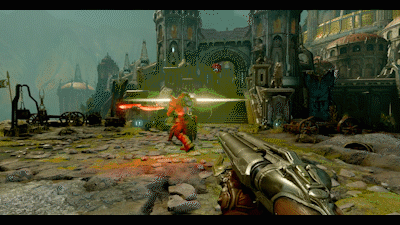
But in Eternal, the action plays out in a way that I want it to, and in a way I would expect. The guns just feel awesome, and I have no complaints about how they handle. The game is all about being a complete boss and ravaging through the denizens of Hell at high velocity — and the weaponry does well to emphasize this.
But the player pulling the trigger is just half the battle. A large part of what makes the combat work is the enemy’s reactions to my attacks.
Another frustration I have with many shooters is the lack of NPC feedback to combat. As a gamer, feedback is important to me. I want to know how close I am to achieving my goal, and if my endeavors are making a difference in the gameplay loop. Bullet Sponge-type adversaries are the bane of my existence, as I have no gauge as to how near an they are to death. Many other games opt for the classic health meter of enemies. This works, but is an annoyance for those players that prefer an uncluttered HUD.
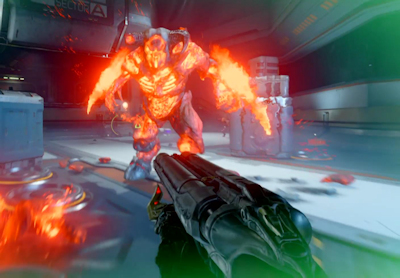
Wounds. That is Doom Eternal’s way of displaying health. As an enemy approaches the “Glory Kill” stage, they progressively show more signs of battle injuries. Exposed muscle tissue begin to surface as they sustain more damage. No need for health meters, gauges, or anything like that.
It’s a subtle way of giving feedback to the player, and a brilliant way to do so.
The Difficulty Curve
Back when I thought my calling was to be a video game creator, I read an insightful book by Jesse Schell known as the The Art of Game Design. It’s a fantastic and comprehensive look into game theory, and what makes a game a game.
Spoiler Alert: I never went into game design myself, but there were many fundamental tenets from this book that stuck with me through the years. One of the most fascinating to me was the idea of the difficulty curve.

Schell references a theoretic model penned by psychologist Mihaly Csikszentmihalyi known as the flow channel. This stems from the basic idea is that we as humans have the ability to focus on select things while tuning out others. The flow channel, in the context of game design, seeks to elicit this ability in the best possible way. This is done through a number of key components, such as clear goals, lack of distractions, direct feedback, and ongoing challenges.
In other words, a good game seeks to bring all these components into balance to create an engaging experience for the player.
And Doom Eternal does just that.
Normally, a game that features rapid depletion of consumables is one that incites annoyance. Eternal, much like its predecessor, is not lenient of players that aren’t careful and consistently empty out their gun magazines. Ammo and health are precious commodities, and being negligent in stewarding these commodities will result in a frustrating gameplay experience.
I mentioned how playing Eternal is not unlike an orchestrated balancing act. Shooting up demons into oblivion, while fun, requires constant acquisition of ammo, armor, and health to sustain the battle. Using the aforementioned mechanics of the chainsaw, Flame Belch, and Glory Kills allow the player to farm these consumables actively. The gameplay loop of blast, farm, blast, farm is a challenging tempo to nail down at times, but so incredibly fun and rewarding. It’s a tightrope walk that veers dangerously close to frustration, but almost never crossed the line for me.
In the context of the flow channel, Doom Eternal is a clear paragon supporting the theoretical model.
Closing Thoughts
If someone had told me five years ago that I would pen a 2,000+ word essay on why a Doom game is great, I would have laughed in their face. While I’ve always acknowledged the importance of the franchise for gaming as a whole, it simply wasn’t for me.
But what developer ID has managed to do with the series of games in recent years has been nothing less than extraordinary. A genre that I cared little about quickly elevated in my mind thanks to the last two Doom releases.
These days, it’s not too often that a video game hits the market which sets some sort of precedent. Mario 64 made the case that platformers could be great in 3D. Grand Theft Auto showed gamers new possibilities through open-world traversal.
Doom Eternal, in my opinion, is right in this zeitgeist. It sets the stage for how a first-person shooter can be both inventive and fun. I admit: Eternal is certainly not 100% original in its presentation of these different ideas, mechanics, and systems.
But the way it brings all these disparate notions into a near-perfect cohesive mix is why I can’t stop thinking about it.
I love Doom Eternal.



